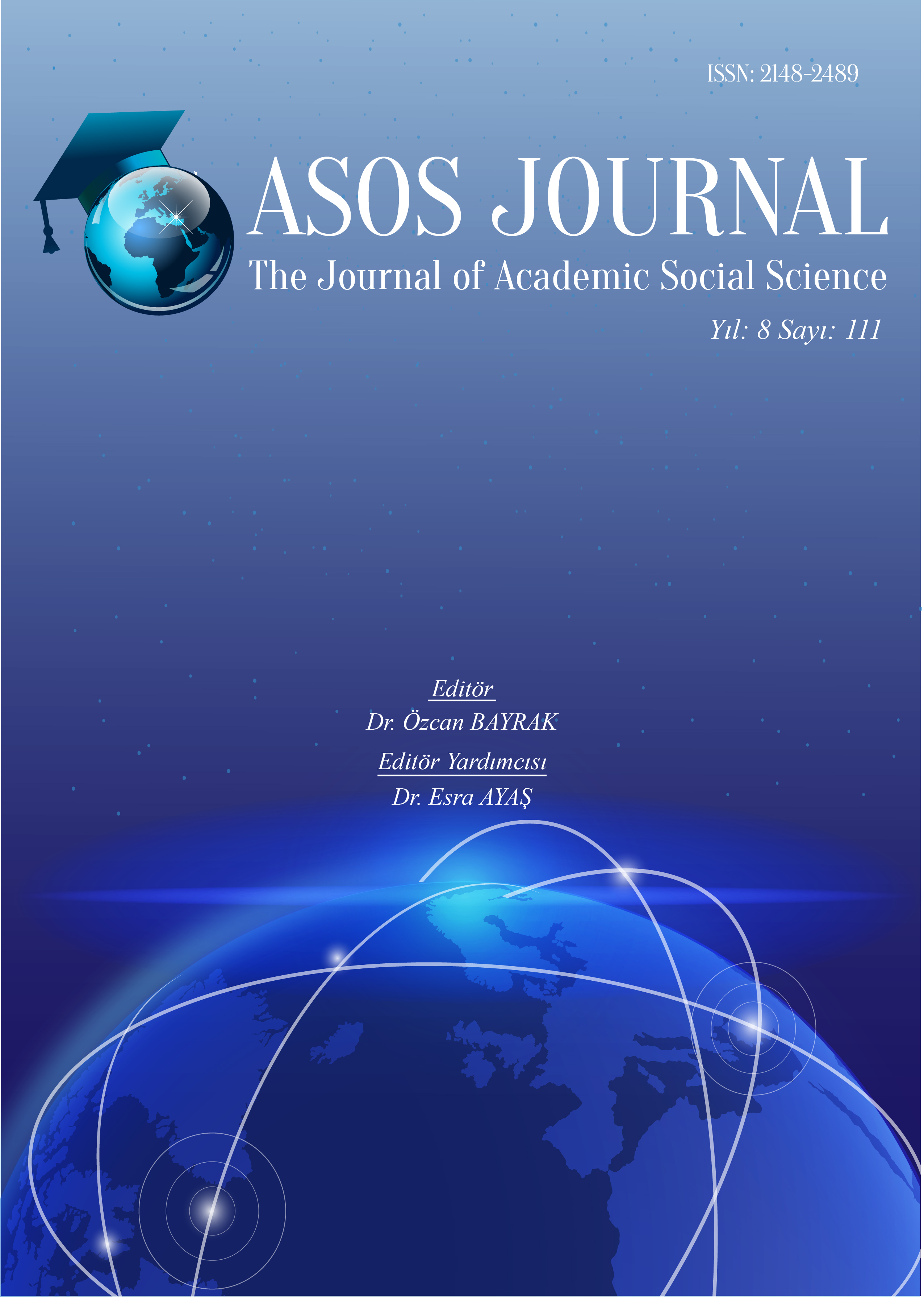Author :
Abstract
Türk Müziği sürekli bir dönüşüm içindedir. Yakın geçmişteki Batılılaşma dönüşümü hem Osmanlı hem Cumhuriyet döneminde Geleneksel Müziği hassas bir konu haline dönüştürmüştür. Zamanla Türk Halk Müziği (THM) Türk Sanat Müziği (TSM) ayrımı keskinleşmiştir. Kuramsal olarak ayrı terimlerle ayrı kurumlarda eğitim süregitmiştir. Bir yandan da önce Avrupa sonra Amerika kültürü etkisi ile Batı Müziğinin popüler versiyonu toplumda kabul görmüş, içselleştirilmiştir. Bu süreçte yaşanan tüm kültürlenmeye rağmen Batı müziği dizisindeki sesler korunmuştur. İç iletişimdeki sorun sebebi le THM ve TSM’de farklı isimler ile anılıp farklı şekilde notaya dökülse de iki gelenekte de özel bemol ve diyezler kullanılmıştır. Bu farklı aralıklardan hangisinin en yaygın olduğu bu çalışmada belge tarama yöntemi ile tespit edilmiş ve bu aralığın ♭²/Segâh sesi olduğu sonucuna varılmıştır. Seyir kavramının önemi de göz önünde bulundurulduğunda sınıflandırmada makamsal terimlere ortak şekilde başvurulması gerektiği öne sürülmüştür. Bu yaklaşımda Hüseynî ve Uşşak makamının özel bir öenme sahip olduğu tespit edilmiştir. Bu değişim sözlü kültürden yazılı kültüre geçiş ile bir sosyal bilimsel temele oturtulmuş ve sonuç bölümünde bu değişim bağlamında öneriler sunulmuştur.
Keywords
Abstract
Turkish Music is in a constant transformation. The recent Westernization transformation has turned Traditional Music into a sensitive subject in both Ottoman and Republic periods. In time, the distinction between Turkish Folk Music (THM) and Turkish Classical Music (TSM) has been sharpened. Theoretically, the education has continued in separate institutions in separate terms. On the other hand, with the influence of European and then American culture, the popular version of Western Music has been accepted and internalized in the Turkish society. Despite all the acculturation, the sounds which are different from the Western music tempered series were preserved. Although, special flat and sharps have been used in both traditions but they are named and notated differently in THM and TSM due to the internal communication problem. In this study, it has been worked on these different intervals and the most common one was determined by the document scanning method and it was concluded that this range was and still is “♭² / Segâh” sound. Considering the importance of this internal communication it has been suggested that in classification, modal terms should be used in common. In this approach, it has been determined that the makams “Hüseynî” and “Uşşak” have a special importance. This change is based on a social scientific basis as a transition from oral culture to written culture, and suggestions are presented in the context of this change in the conclusion section.
Keywords
- Açar, Yakup; Şen, Yavuz. (2014). TRT Türk Halk Müziği Repertuarında Bulunan Kına Türkülerinin Makam Dizileri Yönünden Analizi, Akademik Sosyal Araştırmalar Dergisi, Yıl:2, Sayı: 7, s. 421-460, Türkiye.
- Ayas, Güneş. (2020). Musiki İnkılabı’nın Sosyolojisi, İthaki Yayınları, İstanbul.
- Aydoğdu, Gültekin; Aydoğdu, Tahir. (2014). Kanun Metodu, Yurt Renkleri Yayınları, Ankara.
- Deran, Erol. (2017). Makamdan Makama Geçki Örnekleri, Pan Yayınları, İstanbul.
- Ekici, Savaş. (2016). Bağlama Eğitimi, Yurt Renkleri Yayınları, Ankara.
- Kutluğ, Yakup Fikret. (2000). Türk Musikisinde Makamlar, Yapı Kredi Yayınları, İstanbul.
- Ong, J. Walter. (2014). Sözlü ve Yazılı Kültür, Metis, İstanbul.
- Sönmez, Zeynel. (2008). Bozuk Düzeni Metodu 1, Yurt Renkleri Yayınları, Ankara.
- Tanrıkorur, Cinuçen. (2003). Osmanlı Dönemi Türk Mûsikisi, Dergâh Yayınları, İstanbul.
- Torun, Mutlu. (1993). Ud Metodu, Çağlar Yayınları, İstanbul.
- Tura, Yalçın. (2017). Türk Mûsikîsinin Mes’eleleri, İz Yayıncılık, İstanbul.
- Turgay, Nesibe Özgül; Ayangil, Ruhi. (2016). Fasıl Müziği İcrasında Nota Dışı Farklılıklar, Rast Müzikoloji Dergisi, Cilt 4, Sayı 1, s. 1165-1184.
- Türkiye Radyo Televizyon Kurumu Müzik Dairesi Başkanlığı. (1998). Türk Halk Müziğinden
- Üngör, Etem Ruhi. (1981). Türk Musikisi Güfteler Antolojisi 2, Eren Yayınları, İstanbul.
- Üngör, Etem Ruhi. (1981). Türk Musikisi Güfteler Antolojisi 1, Eren Yayınları, İstanbul.
- Yavuzoğlu, Nail. (2012). Caz Müziğinde Akor Dizileri, Pan Yayınları, İstanbul.
- Yener, Sabri. (2012). Bağlama Öğretim Metodu I, Cem Ofset, Ankara.





